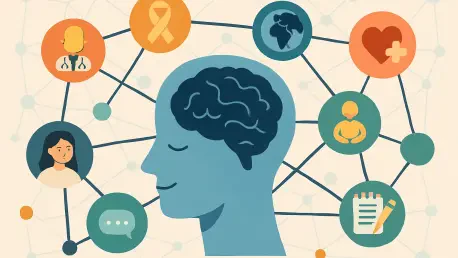As we dive into the complex world of healthcare policy, I’m thrilled to sit down with Ivan Kairatov, a renowned biopharma expert whose deep understanding of technology and innovation in the industry, coupled with extensive experience in research and development, offers invaluable insights. Today, we’ll explore the critical issue of inaccuracies in mental health provider listings within private Medicare and Medicaid plans, the impact on vulnerable patients, and the broader implications for taxpayers and policy reform.
How do “ghost networks” manifest in the context of Medicare and Medicaid plans, and what does this mean for patients seeking mental health care?
“Ghost networks” refer to the listings of mental health professionals in Medicare and Medicaid plans who are supposed to be available to treat patients but, in reality, aren’t. These are providers who might not have contracts with the plans, aren’t working at the listed locations, or have even retired. For patients, this creates a devastating barrier. Imagine someone in a mental health crisis, reaching out for help, only to find that the therapist or psychiatrist they’re referred to doesn’t exist in that network. It’s not just frustrating—it can discourage them from seeking care altogether, exacerbating their condition.
What were the key findings from the Office of Inspector General’s report regarding the accuracy of in-network mental health provider listings?
The report was quite revealing. It found that a staggering 55% of mental health professionals listed as in-network by Medicare Advantage plans weren’t actually providing care to any members. For Medicaid managed care plans, the figure was still significant at 28%. This discrepancy shows a systemic issue where the promised access to care simply isn’t there, leaving patients with far fewer options than they’re led to believe.
What are some reasons behind mental health professionals being listed as in-network when they’re not actually available?
There are a variety of reasons, and the report highlighted several. Some professionals told investigators they no longer worked at the listed locations or didn’t participate in these plans at all. Others had shifted roles, like moving into administrative positions where they no longer provided direct patient care. There were even cases of retirement—yet their names remained on the lists. It points to a lack of oversight and updating in these directories, which is a serious gap in accountability.
Can you share more about the challenges faced by individuals like Jeanine Simpkins from Mesa, Arizona, when navigating these networks for a loved one?
Absolutely, Jeanine’s story is heartbreaking and all too common. She was trying to find a drug rehabilitation program for a family member in crisis, who was covered under a Medicare Advantage plan due to a disability. She reached out to about 20 programs, and not a single one accepted the insurance. She described feeling “dropped” and shocked, having assumed the coverage would provide viable options. Ultimately, her relative had to settle for part-time hospital care instead of the inpatient rehab they needed. It’s a stark example of how these inaccurate listings can derail urgent care.
Why are mental health patients particularly vulnerable when faced with these inaccurate provider listings?
Mental health patients often face unique emotional and psychological barriers. Acknowledging the need for help can be incredibly hard, and taking that first step to seek care requires immense courage. When they encounter roadblocks like calling a provider only to find they’re not available, it can be profoundly discouraging. It’s not just a logistical issue—it can make someone feel dismissed or hopeless, potentially causing them to abandon their search for help altogether. This vulnerability makes accurate listings not just a convenience, but a necessity.
How does this issue of inaccurate listings impact taxpayers financially, according to the report?
The financial implications are enormous. The government pays private insurers hundreds of billions of dollars each year to manage these Medicare and Medicaid plans. These companies are paid per person covered, and they keep whatever they don’t spend on care. When they fail to provide adequate in-network options, especially for something as critical as mental health, taxpayers aren’t getting the value they’re funding. The report underscores that this isn’t just about patient access—it’s about whether public money is being used effectively.
Can you tell us about the scope of the federal report and the areas it covered in its investigation?
The report took a focused approach, examining a sample of 10 counties across five states: Arizona, Iowa, Ohio, Oregon, and Tennessee. This sample included both urban and rural areas to capture a broad perspective. They looked at 40 Medicare Advantage plans and 20 Medicaid managed care plans. While it’s a limited slice of the national picture, the authors argue it’s representative, and I tend to agree given the consistency of issues across diverse regions.
What is your forecast for the future of mental health care access in Medicare and Medicaid plans if these issues persist?
If these issues aren’t addressed, I foresee a deepening crisis in mental health care access. We’re already seeing trust erode between patients and the healthcare system—stories like Jeanine’s will only multiply. Without stronger oversight, updated directories, and real accountability for insurers, disparities in care will worsen, particularly for vulnerable populations. On the flip side, initiatives like a national searchable directory of providers, as suggested in the report, could be a game-changer if implemented effectively. But it will require sustained effort from policymakers and industry stakeholders to turn the tide.









